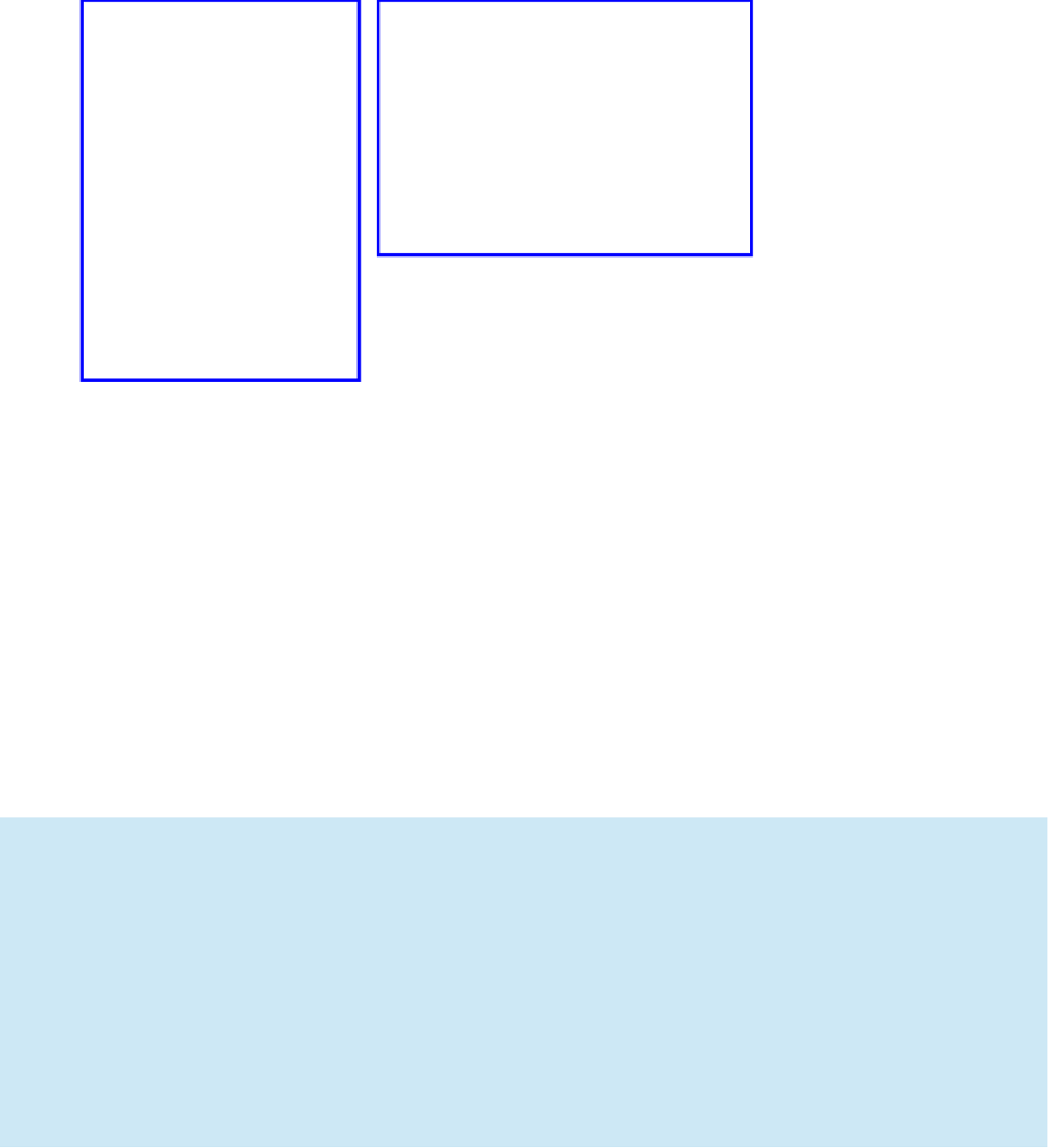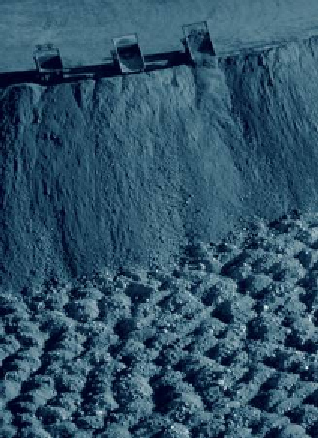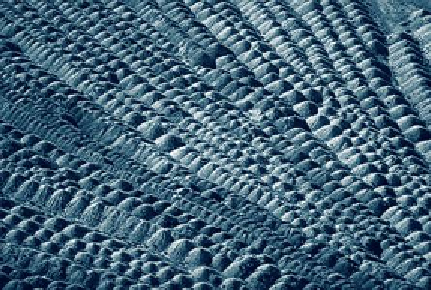Environmental Engineering Reference
In-Depth Information
Bottom-up storage
in which the waste rock is dumped in a series of piles,
and then spread to form a relatively thin layer (copper mining waste rock piles,
Pinal County, Arizona).
Photo: Courtesy of Jim Wark,
www.airphotona.com
FIGURE 19.3
The Top-down and Bottom-up Construction of Waste Rock Dumps
Top-down
in which the waste rock is dumped over an
advancing phase.
Photo: Courtesy of Peter Essick, National Geographics
for waste rock disposal. The disadvantage is that valleys contain streams, and filling a val-
ley requires that surface drainage be accommodated in the design. The best storage sites in
these circumstances are at the heads of valleys where there is little or no upstream catch-
ment area. However, such sites may be remote from the mine.
On flat or gently sloping plains, where conditions are similar over wide areas, the main
criterion for site selection will be proximity to the mine. It is also relevant to the site selection
process to consider how the storage will be created, whether using a top-down or bottom-up
approach. The comparative benefits of these approaches are discussed in the next section.
The foregoing discussion addresses the vast majority of waste rock storages used by the
mining industry. However, two other approaches warrant consideration, namely riverine
disposal and marine disposal. Riverine disposal of waste rock is practised at only a few
sites, including the Ok Tedi Mine in Papua New Guinea (PNG). It has proved to be prob-
lematic and controversial (
Case 19.2
). It is unlikely that riverine disposal would have been
proposed or permitted, had the outcomes been predicted in advance.
CASE 19.2
Ok Tedi Copper Project, Papua New Guinea
The Ok Tedi Copper-gold ore body is one of the world's
largest porphyry copper deposits. The Panguna Mine which
has been exploiting this ore body since 1984, is located at
an elevation of 2000 m in the Star Mountains of western
PNG. Waste rock from the open Pit mine amounting to
40 million tonnes each year, is discharged together with
tailings, to the Ok Tedi River which fl ows into the Fly
River, one of PNG's major river systems, before entering
the Arafura sea about 1000 km by river downstream of
the mine. The Ok Tedi River is a high velocity river which
transports the bulk of mine derived sediment plus natural
sediment and erosion products, without appreciable deposi-
tion. However, from where the Ok Tedi meets the Fly River
at an elevation of only 18 m above sea level, the bed
gradient and fl ow velocities are much reduced, resulting in
deposition of much of the sediment load.
River bed levels became elevated as a result of sedi-
ment deposition. Eventually, the river overfl owed its banks
leading to widespread deposition within the adjacent low-
land forest areas, causing loss of or damage to more than
1300 square kilometres of forest. Social effects included
loss of livelihoods for residents of up to 130 villages.
Following social unrest and court action, the operating
consortium which included the PNG government, agreed
in 1996, to provide compensation of US$ 28.6 million.
In addition, one-third of profi ts from operations are now
directed to development projects in western PNG.












Search WWH ::

Custom Search